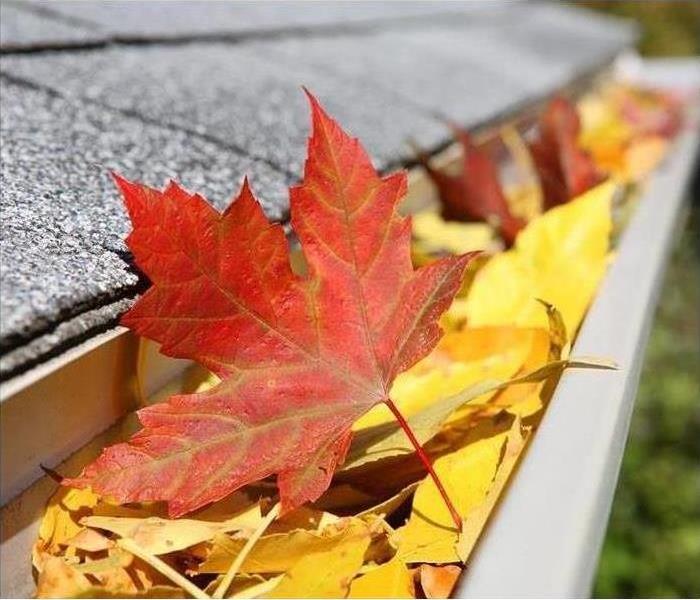How to Clean Your Gutters
9/1/2021 (Permalink)
"Preparing to Work on Your Gutters
Thoroughly cleaning your home’s gutters every spring and fall will keep them working like they should. Leaves can build up and clog the downspouts, which can cause water damage to your roof and fascia (the board behind the gutter). Water pouring over the gutters or from leaks can end up next to your home’s foundation, in the basement or crawlspace.
Cleaning the Gutters
A hose-end attachment specially designed for gutters may make this project a lot easier. If you need to clean from a ladder, follow these steps.
Step 1
Begin cleaning the gutter near a downspout.
Step 2
Remove the large debris (leaves, twigs, etc.) with a trowel and dump it in a bucket.
Step 3
To clean out finer materials, flush the gutter lengths with a hose starting at the end opposite the downspout. Alternatively, you can use a gutter-cleaning attachment on a hose. If the water doesn’t drain, recheck the downspout strainer and clean as necessary.
If gutter water still doesn’t drain, the downspout may be clogged.
- Check the drain end. If the downspout runs underground, remove it from the pipe as needed.
- Install a small nozzle on the hose, and lock it at full pressure. Turn on the water and feed the hose up from the bottom of the spout. If this doesn’t clear the downspout or the nozzle is too big, use a plumber’s snake tool to clear the blockage.
- Reattach the downspout.
- Flush the entire gutter again.
- Be sure to clean the downspout strainers.
Gutter Maintenance and Repair
Step 1
If there's still standing water after the gutter has been flushed, the gutter may not be sloped correctly and will require adjustment. The length of the system should decline at least ¼ inch every 10 feet toward the downspout.
If the gutter doesn’t slope enough, detach the hangers and adjust the gutter enough to drain properly, then reattach. It may be easier to work on small sections at a time to prevent the entire gutter system from falling.
Step 2
Inspect the gutter sections and downspouts for obvious damage and missing parts. Support hangers should be spaced every 2 feet along the gutter.
To replace or add hangers:
- Install screw and ferrule hangers by marking their position on the gutter, drilling the holes in the gutter lip and fascia, then driving the screw with a drill through the ferrule.
- Install screw-in or hidden hangers following the manufacturer’s directions. Most are attached through the rear of the gutter and into the fascia board, then clipped to the inside-front of the gutter.
- If no fascia board exists, use roof hangers with straps, following the package instructions. Typical installation involves attaching a hanger across the gutter channel, clipping a strap to the hanger, then attaching the hanger under the shingles.
Step 3
Repair any leaks in the gutter.
- To repair leaks at the seams, make sure the gutter lengths are tight against each other, and run a bead of gutter sealant on both sides of all joints.
- To repair leaks at the end caps, add sealant along the inside of the joint.
- To repair holes in the gutter material, ask a Lowe’s associate for products designed to repair aluminum or fiberglass gutters.
Step 4
Apply gutter touch-up paint to cover any blemishes as desired. If necessary, repaint some or all of the gutters."






 24/7 Emergency Service
24/7 Emergency Service
